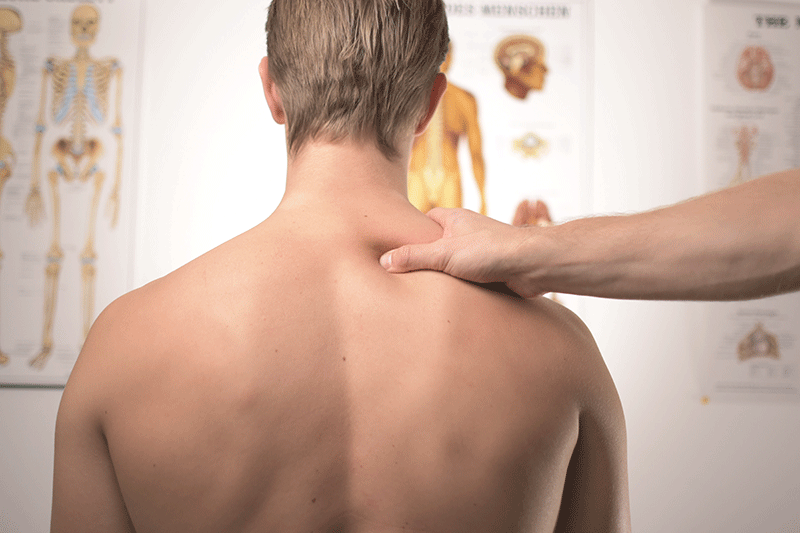
During my twenty-five plus years in medicine, most of that focused on the conservative (non-surgical) management of musculoskeletal injuries (roughly 70% spine-focused) and trauma, I had the pleasure of interacting with an astoundingly varied assortment of patients presenting with a host of aches, pains, and pathologies. No day was ever quite the same, and there was (and is) always something new to learn every day.
My principle task was of course helping figure out what the heck was the main problem at hand (diagnosis), because frankly it’s impossible to articulate an effective and cogent treatment plan unless you really understand the underlying issue(s). Only then could an effective treatment plan be customized to optimally fit a patient’s needs; that process typically also involved laying out a list of best choices in terms of treatment options and potential outcomes.
I believed then, and still do adamantly today, that a caregiver’s most critical tasks are making an accurate assessment of the issues at hand (there’s that diagnosis issue again) AND educating their patient (or client if you will) about a host of things – the problem itself, options to make things better, consequences of not dealing with the problem, and finally – managing expectations about recovery and the future.
Though it took several years to really appreciate all the moving parts in play here, over the long haul one of the more challenging aspects of that entire process was managing expectations patients brought to our relationship – the most challenging of all was the expectation that there was some magic pill, potion, therapy, surgery, or other treatment that could and would make them “pain free”.
The Pain Free Life After 40: Myth or Reality?
No doubt some will disagree, but after spending the better part of four decades studying human physiology, focused both on response to injury and normal degeneration (let’s call it wear and tear), along with ways to mitigate the problem(s) and improve function using a variety of approaches – I’m convinced it’s nigh on impossible to live an active, healthy lifestyle and NOT experience a host of aches and pains along the way, particularly for those of us who have invested four decades or more living our lives.
My rationale is pretty simple, and of course is colored in part by my own personal experience.
First, no matter if you come from the intelligent design or the evolution camp, there’s no question that the human body we see wandering the earth today experiences wear and tear changes along the way. This is of course common sense, something that we see all around us, and feel ourselves, just about every day, and yet several interesting points apply.
The longevity of the human body is critically impacted by how you care for it along the way. There are a host of great examples, but here’s the easiest one – living for years overweight increases joint loading (think hips, knees, ankles/feet, and spine) and accelerates degenerative changes in vital joint structures.
Or how about that combination ACL/MCL tear on the high school sports field or the ski slope (actually pick your major joint here – the other common example I see over and over again is a shoulder/AC joint/rotator cuff problem that starts at a very young age) that almost always leads to accelerated degenerative joint changes down the road.
Even some of the fitness activities that we all laud and encourage – jogging, running, cycling at a high level, hours spent in the pool swimming, some would even include CrossFit here – stress joints and other parts of the musculoskeletal system mechanically and probably do, at some level, indeed accelerate inevitable wear and tear.
We continue to do those fitness activities because the myriad benefits far outweigh the wear and tear we’re inducing, however there’s still a wear and tear component to the process.
Those changes wear and tear changes accumulate over the months and years, and now and again will inflame and generate what we all perceive as aches and pains. Don’t forget that typical age-related muscle and strength losses happen too, impacting joint support and mechanics; throw in a sedentary lifestyle and even worse overall physical conditioning, and joint changes worsen even more – and so do the inflammatory-driven aches and pains.
So Being Absolutely Pain Free After 40 Is Indeed a Myth?
What I suggested to patients for years and now for coaching clients is simply this – I think it’s virtually impossible to be absolutely free of aches and pains after 40 living an active and functional lifestyle.
Perhaps even more importantly, I’d argue that there are some “aches and pains” that are unquestionable a good thing; probably the best example is DOMS (delayed onset muscle soreness) after a new workout or pushing your game a little.
Wear and tear of the human body (sometimes referred to as the degenerative cascade) just happens; part of your musculoskeletal longevity might be genetically influenced, but the most critical impacts are related to how well you care for yourself over the long haul.
There’s no question whatsoever than you can dramatically influence inflammation levels in your body via diet (we’ll be looking at detail in inflammatory impacts from diet in a several post series shortly). Moving closer to whatever you consider your ideal body weight will have dramatic impacts as well, as will rebuilding (or working hard to maintain) practical levels of functional conditioning – getting into, and staying, in “fighting trim” will itself invoke some soreness and aches along the way.
Your body has amazing recuperative powers.
Is it theoretically possible to live a pain free life? Sure it is, it’s just not very probable.
Instead, embrace the occasional joint tweak, morning stiffness, and sore muscle group – it’s going to happen again and again. And relish those days when everything feels pretty good, modify on the days that it doesn’t, and just keep moving.





















